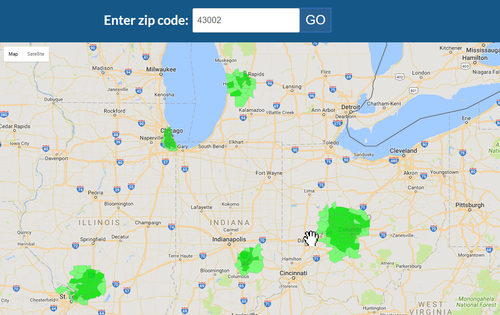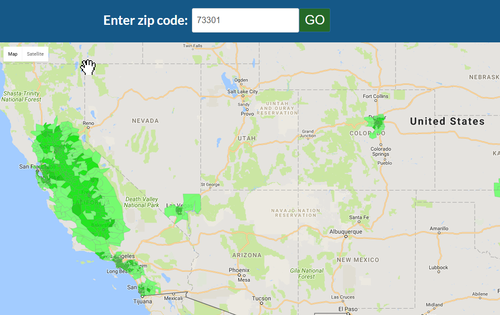Senet LoRaWAN IoT Network Has Great Start on Global Ambitions
As published by TMCnet, November 2, 2017
We estimate LPWAN connectivity could power half of the world’s IoT devices in the next five years. With range of more than ten miles and devices running on a single battery for a decade, we expect sensors and other IoT devices to be widely distributed. In addition, mass-production will reduce prices, meaning even greater distribution in virtually every industry.
Certainly, LoRa is a strong contender in the LPWAN space – the ecosystem is growing at a staggering pace. Who will own the LoRaWAN network of the future? Will there be a handful of them? Hundreds? Thousands?
In the past we’ve discussed how cable providers in the U.S. plan to deploy set top boxes with LoRa built-in to power smart homes and also become part of a broad network of devices. The challenge of course is OTT is killing the set-top box. A million people cut the cord in the last three months alone. Perhaps it makes more sense to put LoRa gateways in the cable-modem.
But such solutions are regional at best. Even if cablecos come together to form a loosely-affiliated network of networks, it would likely work poorly based on the experience we continually have with CableWiFi.
What is needed is a more serious LoRaWAN solution from a company which has the experience in the space and a business model which allows it to scale a solution to meet global needs.
Enter Senet, the company started out in tank monitoring for propane and communicating with the fuel company. They rebranded their company from EnerTrac to Senet when they saw the opportunity to provide global connectivity to the tens of billions of devices which will eventually need connectivity.
The added OSS and BSS services so they could in-effect become a carrier. They now own the largest LoRaWAN network in North America and are in 225 markets covering 100,000 square miles.
The company has a very interesting model for building out its network. To some degree, it takes advantage of crowdsourcing but for networks – perhaps we can call it network sourced.
There are a few deployment models the company has:
- Public network-as-a-service which operates like other networks, customers pay based on the number of devices they connect.
- Public/Private hybrid is where the customer buys a gateway/antenna and they work with Senet to set up a public/private network on their behalf.
- Managed Network Services for IoT or MNSI allows a customer who owns a building or right of way to be a white label carrier – they buy the equipment and recruit customers but Senet operates the network. Out sister site IoT Evolution broke the news of Senet’s success in this area recently via a few stories:
I. Senet to Support India LoRaWAN IoT Network for SenRa
II. LoRa Alliance Grows to More Than 500 Members, While Senet and SenRa Launch Indian Network
III. IoT Sensor, Equipment and Software Providers are Missing New Revenue, Says Disrupte
4. LPWAN Virtual Network is where the network provider partakes in a revenue share on the devices they deploy as they become part of a far larger global network.
The latter three models work synergistically, proving an opportunity for those with assets such as buildings, towers and rights of way to monetize them effectively. By partnering with Senet, they are able to instantly join a global network and benefit from it financially, increasing their ROI.
Bruce Chatterley who we interviewed said, “Senet is a developer of cloud-based platforms and services that enables rapid deployment of IoT networks when and where needed at appropriate cost” He continued, “Cellular can’t hit all the places unique to an application.”
He offered as evidence, a customer which makes sensor-laden stakes for smart-farming which notify the farmer when to water and fertilizer as well as providing valuable temperature data. He explained that many of these stakes are not covered by cellular or are covered poorly.
In such instances, another application is often running nearby – perhaps a fertilizer tank monitoring company which may have equipment on a grain silo or water tower which can be leveraged through Senet to provide connectivity to the stakes.
In this manner, all these networks are connected in one giant global LPWAN virtual network accessible by numerous applications and customers.
Bruce explained that equipment can be preconfigured allowing them to be deployed securely with zero-touch deployment.
The company provides a coverage map and we did a few searches to give you an idea of how the United States looks from a connectivity standpoint. Darker green means more network density.
Connecticut and Long Island, New York
Central United States
California and West Coast
For more see IoT Connectivity Standards? Still a Confusing Mess and come to IoT Evolution Expo, January 22-25, 2018 in Orlando, FL where there will be a major session titled IoT Connectivity Showcase which will help you choose the best connection type for your application.
In addition, when you come to this Enterprise IoT Event, you’ll see IBM, Ingenu, Cradlepoint, TellientARM, McAfee & other major companies. There will be a special focus on Smart Cities, Security, IIoT and case studies.




